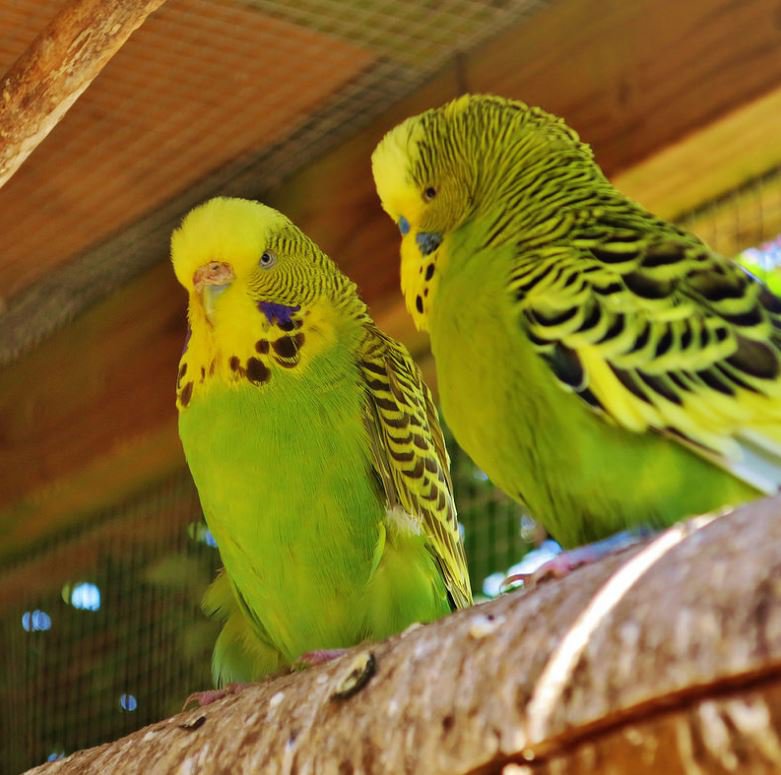Budgerigar
Since its introduction into captivity, the Budgerigar (or 'budgie') has been bred into a variety of colour forms, including pure white, blue, yellow, mauve, olive and grey.
What do Budgerigars look like?
Identification
In the wild, Budgerigars are small green and yellow parrots, with black barring above, and a small patch of blue on the cheek. The male has a dark blue cere (skin at the base of the upper mandible surrounding the nostrils). In the female this is brownish when breeding and light blue otherwise. Young Budgerigars are similar to the adult birds, but are duller and have a dark brown eye (which is white or yellow in adults).

https://creativecommons.org/licenses/by-nc/4.0/
Where do Budgerigars live?
Habitat
Budgerigars are nomadic and large flocks of birds can be seen in most open habitat types, but seldom far from water. Very large flocks, numbering occasionally in the tens of thousands, are seen after a season of abundant rainfall and food. Flocks are usually much smaller, however, and range from as few as three birds up to 100 or more. Birds in a flock fly in a characteristic undulating manner.
Distribution
The Budgerigar occurs naturally throughout much of mainland Australia, but is absent from the far south-west, the north of the Northern Territory, Tasmania and the majority of the east coast.
Seasonality
Budgerigars are nomadic.
What do Budgerigars eat and how do they communicate?
Feeding and diet
Budgerigars feed almost exclusively on the seeds of native herbs and grasses, such as porcupine grass and saltbush. Seeds are mostly eaten from the ground and the bulk of drinking and feeding activity is in the morning.
Communication
The contact call is a warbling 'chirrup' 'zit' is given in alarm.

https://creativecommons.org/licenses/by-nc-sa/4.0/
How do Budgerigars mate?
Breeding behaviours
Budgerigars tend to breed in response to rainfall, and may produce several broods if conditions permit. The nest is a bare cavity in a suitable tree branch or in the trunk. The female sits on the round white eggs. As with other parrots, young budgerigars are born naked and helpless.
Breeding season
Any time of year when conditions suitable
Clutch size
6 to 8
Time in nest
35 days
References
- Crome, F. and Shields, J. 1992. Parrots and Pigeons of Australia. Angus and Robertson/National Photographic Index of Australian Wildlife, Sydney.
The Birds of Australia online publication
Delve into The Birds of Australia online publication and discover the incredible world of Australian birdlife. Trace the journey of ornithologist John Gould and his wife Elizabeth on one of the most significant birding expeditions in history and learn about the unique and diverse bird species in Australia.
Explore now

